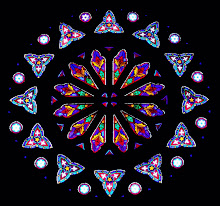
It is not often that we encounter the key of D flat minor, the key signature of which would be 8 flats and the relative major of which is F flat major. Composers generally use the enharmonic key of C sharp minor with a mere 4 sharps in its key signature. In fact, in the A flat major Ballade of Chopin, an entire passage [mm. 157-193] which is functionally in D flat minor is notated in the 4-sharp key signature. The relationship of D flat minor to the home key of A flat major is that of the minor subdominant, or ‘minor IV’. It is a relationship based on mode mixture - the use of the opposite mode within a larger structure.
In Schubert’s A flat major Impromptu, op. 142, no. 2, the middle section is in the subdominant key of D flat major. Within that section is a passage in D flat minor, the parallel minor of D flat major, quoted above. Schubert accomplishes this not by an enharmonic key signature change but by writing in the accidentals F flat and B double flat when those pitches are required.
The excerpt also contains a beautiful example of ornamental chromaticism: the D naturals and F naturals in the 3rd measure act as accented passing tones on the downbeat and neighboring tones on the 3rd beat, all within a 2-measure rhythmic extension of the dominant.

No comments:
Post a Comment